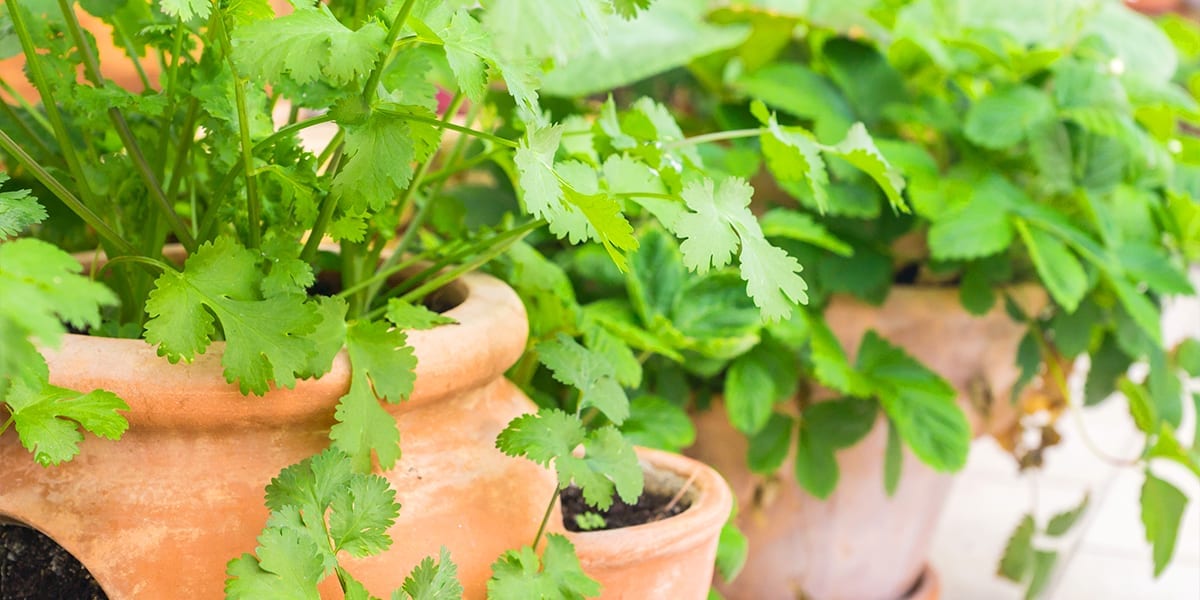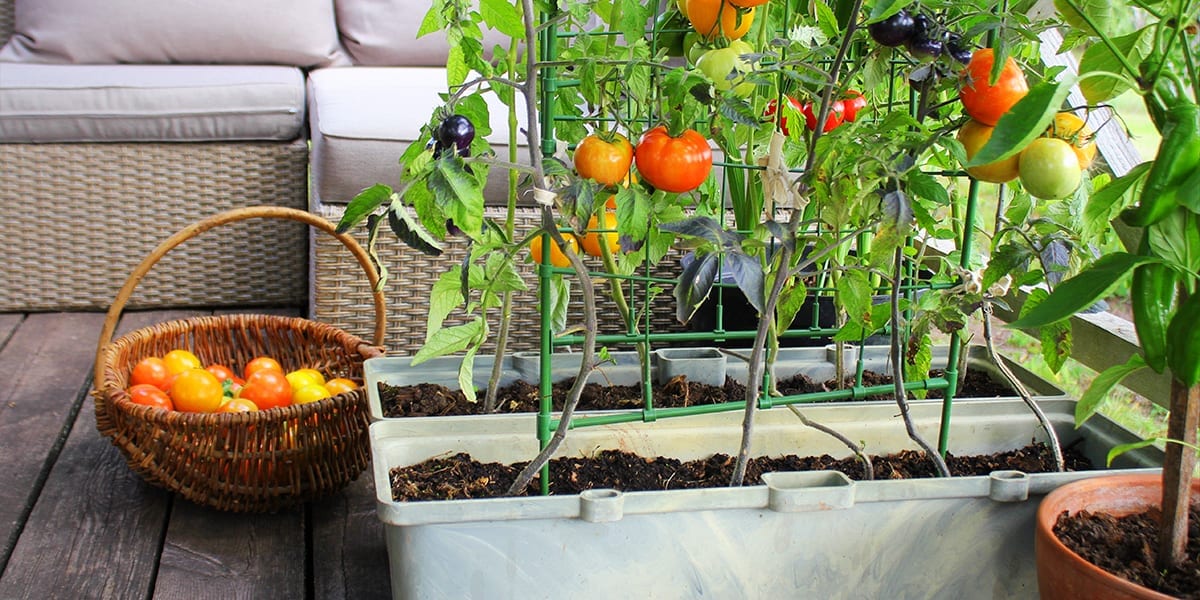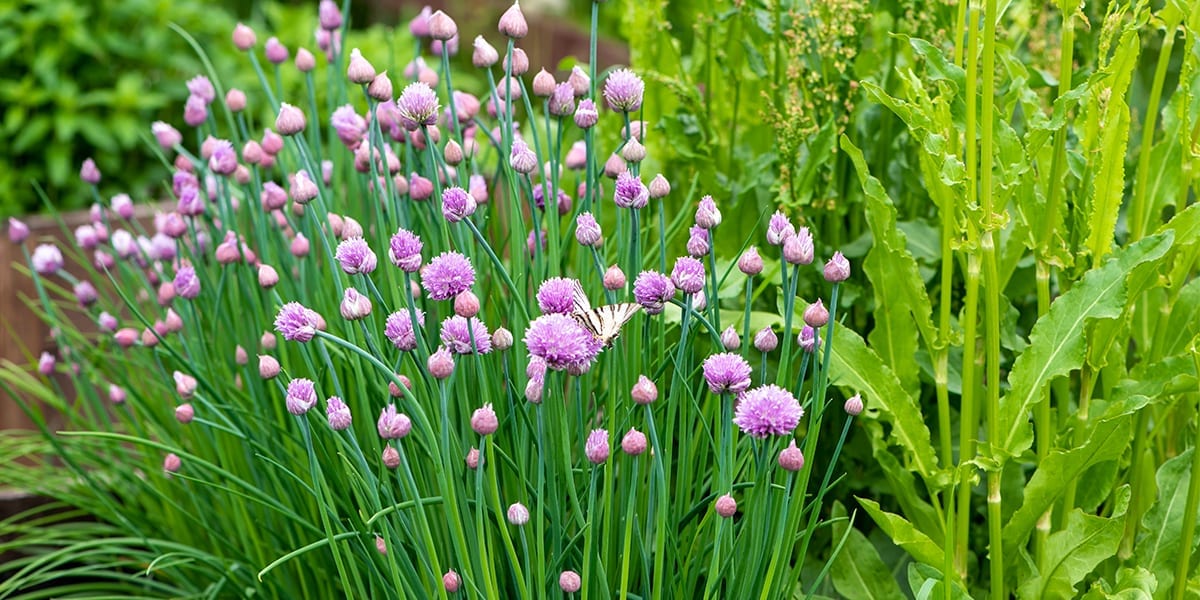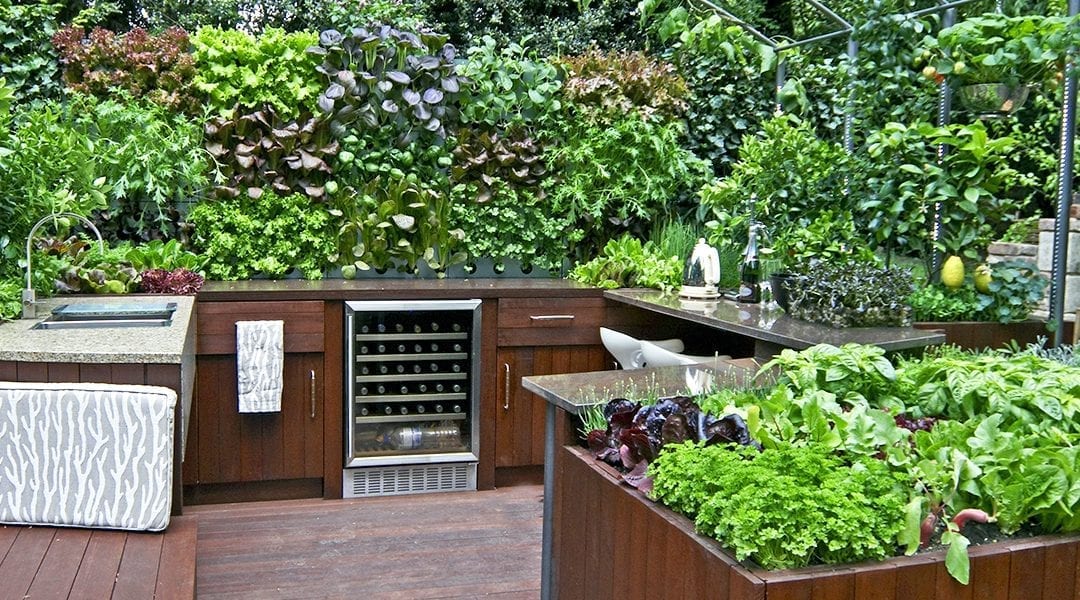If you have an outdoor kitchen, enjoying your meals outside has already become that much easier since you no longer have to run in and out of the house. But what if you could take it one step further by having all the fresh veggies and herbs you could need within arm’s reach?
That’s where edible planters come in! Grow fresh herbs, vegetables, fruits, and other edible plants in containers as part of your outdoor kitchen design so that all your garden-fresh ingredients are right there to harvest when you need them.
Ideas for Edible Planters
Growing edible plants in containers can make a beautiful impact on your outdoor kitchen design. You can keep things simple by growing one plant per container, or growing various species in each pot. If you’re feeling creative, try letting the plant change the atmosphere throughout the seasons, like decorating with pumpkins in the fall or sunflowers in the summer.

What to Grow in Edible Planters
Generally, the bigger the mature plant—or the more types of plants you want to put in one container—the bigger the pot you’ll need. If you don’t have a lot of space or prefer smaller planters, opt for compact vegetable varieties, like cherry tomatoes, versus larger ones.
Herbs: Not only will growing fresh herbs come in handy this summer, but you can also dry them to use all year round! Look in your pantry to see which herbs you use the most—there’s a good chance you can grow all of them in your yard! Basil, mint, oregano, parsley, rosemary, sage, thyme; the list goes on! Grow in a well-drained container with little fertilizer.

Vegetables: Potatoes, a staple in every season, grow well in large pots with lots of sun. Other great veggies to grow in planters include cherry tomatoes, cucumbers, and pole beans. Plant beans in pots with a trellis and train the vines to climb to add vertical interest to your outdoor kitchen. If you plan to grow from seeds, now is the time to start them indoors so that they’re ready to transplant after any risk of frost has passed—around the end of May here in Illinois. You can even grow tomatoes, cucumbers, and beans in hanging baskets! Opt for smaller cucumber varieties if doing so.
Salad Greens: Arugula, leaf lettuce, and romaine don’t just look fabulous growing in your yard, they’re also delicious! Grow salad greens in their own pots, or add them to containers with other vegetables to make the most of the available space.
Berries: Round out your outdoor meal with fresh strawberries for your cocktails or desserts! Strawberries grow great in hanging baskets. Put at least three plants into the basket, and plant an ever-bearing variety for multiple harvests throughout the summer.

Edible Flowers: Nothing’s quite as summery as salads or ice cream sprinkled with edible flower petals. Plus, blooming flowers growing alongside juicy vegetables can make the landscape feel homey and welcoming. Grow nasturtiums, pansies, and roses for a colorful (and tasty) impact. Some herb flowers, like chives and thyme, are also edible.

Companion Plant Combinations
If you plan to grow more than one type of plant in a single pot, keep in mind the needs of each plant. Make sure they have similar water, fertilizer, and sun requirements. Here are some combinations that work well together and look great!
- Beans, carrots, squash
- Tomatoes, basil, oregano
- Lettuce, pansies, rosemary, thyme
- Cucumber, nasturtium
- Strawberry, mint
Edible plants can add just as much to your landscape design as ornamental varieties. So stop in to start working on your dream edible planters for your outdoor kitchen!
Click for more information about herb gardening.
The Top Ten Garden Vegetables and Fruits for Beginners
Platt Hill Nursery is Chicago’s premier garden center and nursery.

